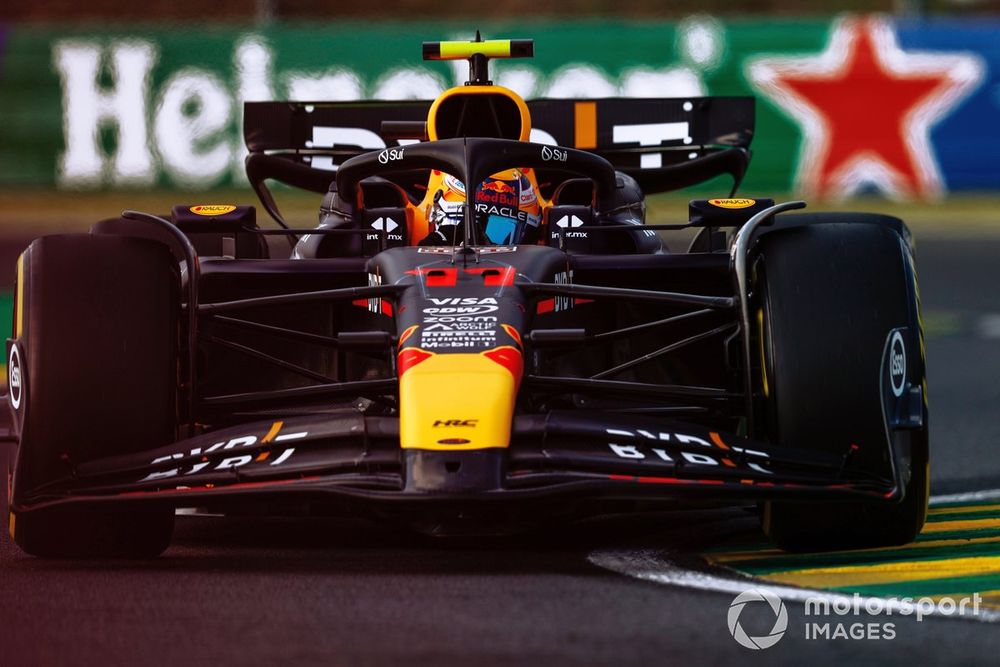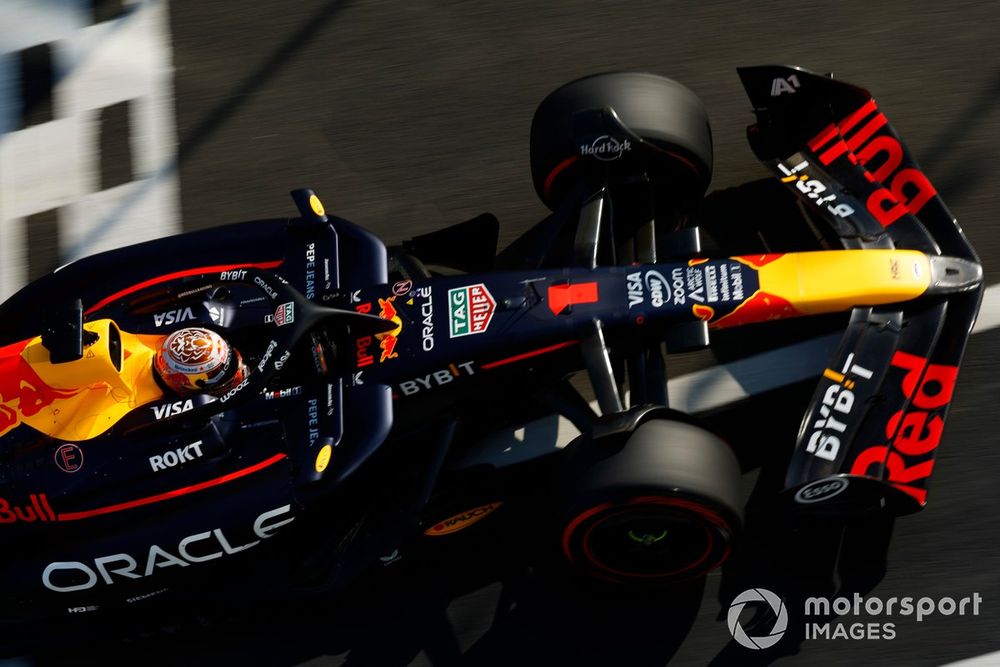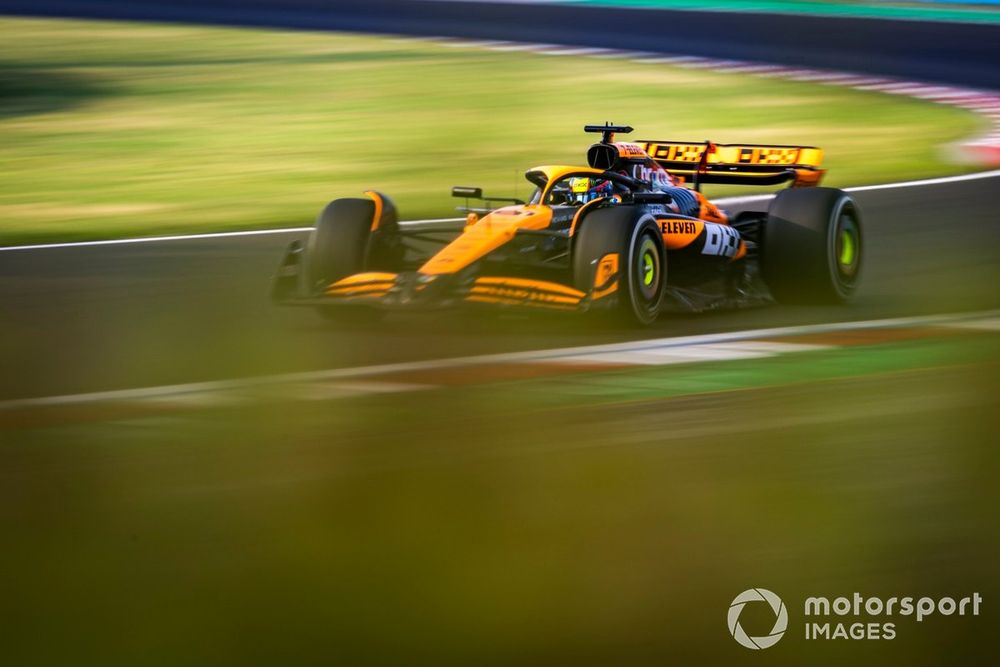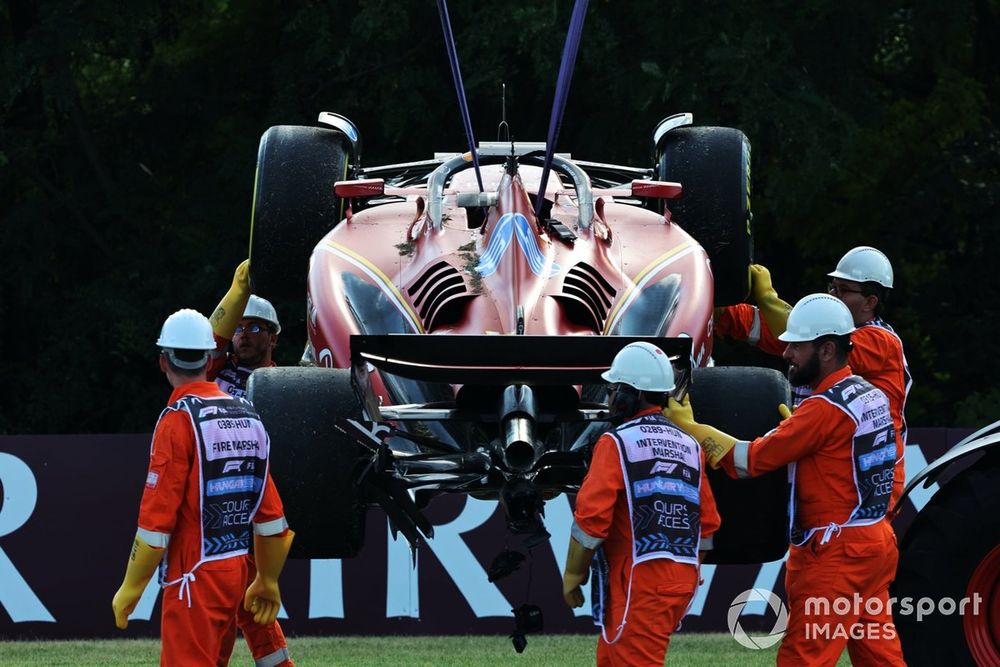Lando Norris and McLaren led the way in terms of pure pace on Friday at the 2024 Formula 1 Hungarian Grand Prix, but a closer look at long-term race times suggests Red Bull has the edge in terms of race pace at this stage.
Red Bull also spent the day assessing the impact of its much-discussed engine cover cooling upgrade applied so far only to Max Verstappen’s car, while Ferrari was also working on what data it could on its reworked Barcelona floor amid Charles Leclerc’s disrupted day.
All this and more is included in our assessment of the current situation at the Hungaroring.
Watch: McLaren beats the heat – F1 News – Hungarian Grand Prix Friday
Story of the day
In the first free practice session, the sweltering temperatures were the most noticeable element – with track heat peaking at 59.1°C, which Pirelli says is only surpassed in its historical F1 data by 60°C at the 2018 race here and the 61°C in the first free practice session at the 2016 Malaysian GP.
F1 got a glimpse of Verstappen’s heavily revised RB20 – without the high-waisted cooling vents added to Red Bull’s package earlier this year – as he emerged from the pits, while Perez continued with the team’s old design.
Red Bull motorsport advisor Helmut Marko would later say: “Checo has the same upgrade as Max, but this part (sidepod and engine cover) is the most obvious to see, so everyone thinks he doesn’t have it.”
“But Checo has the rest,” Marko continued. “So the difference is marginal in terms of performance.”

Perez doesn’t have all the Red Bull upgrades, but the difference in performance is minimal
Photo by: Zak Mauger / Motorsport Images
Aston Martin also split the specification of its car in the first practice session, with only Fernando Alonso using his suite of front wing, halo, floor, diffuser and wing beam modifications (Lance Stroll got them in the second practice session). Here, the Ferraris were fitted with new floor pans that the Scuderia says will help to address the high-speed cornering bounce that has plagued the SF-24s since Barcelona.
Carlos Sainz led the way in the first session of the day, setting a best time of 1m18.713s to edge out Leclerc, before Verstappen overtook him with a 1m18.989s to finish 0.276s behind in second. Verstappen was running on used softs, however, and so lacked freshness on his new tyres, having opened up on the softs while the Ferraris were running on hards.
Ferrari’s day took a turn in FP2, as Leclerc caused a lengthy red flag period with his crash at Turn 4 in the first session on medium tyres. An overtake on the kerbs exiting the fast left-hander unsettled his car and sent it spinning backwards into the outside barriers of the track. After a 15-minute delay while the barriers were rearranged, the field returned en masse on the softs, eclipsing Perez’s early time of 1m18.568 on the mediums.
Verstappen lost time to Norris in the first sector thanks to his fastest FP2 times, but closed in with a purple middle sector before dropping back as his soft rear tyres struggled for grip in the final corners.
Russell took the early lead with a 1m18.294s, before Norris set the fastest time of the day, with those laps coming either side of a moment of madness for Zhou Guanyu. He spun at the same point as Leclerc, unsettled by Perez slowing down on the line ahead as Zhou approached Turn 4 and the Sauber narrowly missed the Red Bull. Zhou had lost cooling elements to his sidepods in the first free practice session.
Norris’s 1m17.788s remained unbeaten thereafter, while Sainz’s soft-tyred driver came in 0.397s behind and Verstappen was second again – this time 0.243s behind another opponent.
General Order FP2
| 1. | Norris | McLaren | 1m17.788s | |
| 2. | Verstappen | Red Bull | 1m18.031s | +0.243 s |
| 3. | Sainz | Ferrari | 1m18.185s | +0.397s |
| 4. | Russel | Mercedes | 1m18.294s | +0.506 s |
| 5. | Magnussen | Haas | 1m18.315s | +0.527s |
| 6. | Ricciardo | RB | 1m18.371s | +0.583s |
| 7. | Albon | Williams | 1m18.514s | +0.726s |
| 8. | Alonso | Aston Martin | 1m18.519s | +0.731s |
| 9. | Sloppy | Sauber | 1m18.586s | +0.798s |
| ten. | Ocon | Alpine | 1m18.754s | +0.966s |

Verstappen set second fastest time on Friday despite early brake problem
Photo by: Glenn Dunbar / Motorsport Images
Verstappen lost time to Norris in the first sector thanks to his fastest time in FP2, but he closed in on a purple intermediate sector before falling back as his soft rear tyres struggled for grip in the final corners. The Dutchman also complained of a brake problem – “they don’t bite,” he said on team radio – early in FP2.
An oversteer on the exit of Turn 2 proved costly for Verstappen as, according to the cars’ GPS data recorded during the fastest laps of FP2 on Friday afternoon, he went from just ahead of Norris heading into the left-hander to 0.25s on the exit. That’s essentially the same gap the world champion faced at the end of the lap.
Oddly, the Red Bull doesn’t appear to have been reduced as significantly in engine modes (with all the usual caveats in that area and practice fuel loads). Sainz’s Ferrari, however, was regularly clocked with a higher top speed at the end of the main straight in both FP1 and FP2, while in the latter Verstappen’s speed matched Norris’. Typically, Red Bull’s engines are revving out of sync with all their leading rivals in Friday practice.
At Mercedes, the team believes it has not yet found the ideal balance point for the W15 over a single lap, but is confident it can at least trouble Red Bull and McLaren in qualifying.
Mercedes’ fastest lap in FP2 – set by Russell – was also characterised by tyre temperatures being too low for the opening corners and Russell therefore lost 0.3s of his final 0.506s gap to Norris’s fastest time at Turn 3 alone.
The peloton then moved on to the long runs typical of the end of FP2.
What the data tells us
In this case, McLaren is an exception: the orange team chose to run alone with the hard C3 tires for the end of FP2.

While others were using medium tyres, McLaren spent a lot of time evaluating the Pirelli hard compound
Photo by: Sam Bloxham / Motorsport Images
Norris and Oscar Piastri both ran on hard tyres, with the former’s 1’24.300s average comparing favourably with Mercedes’ best average (Russell’s) on the mediums. But on these tyres (see below), Red Bull comfortably led the way on Friday afternoon.
Medium and long term averages
| 1. | Red Bull | 1m23.939s | 8 rounds |
| 2. | Mercedes | 1m24.403s | 10 rounds |
| 3. | Alpine | 1m24.500s | 7 towers |
| 4. | Williams | 1m24.588s | 11 laps |
| 5. | Ferrari | 1m24.705s | 12 rounds |
| 6. | RB | 1m24.854s | 10 rounds |
| 7. | Haas | 1m24.867s | 11 laps |
| 8. | Sauber | 1m25.292s | 7 towers |
| 9. | Aston Martin | 1m25.328s | 10 rounds |
*N/A McLaren
Perez recorded the times in the table above, but most impressive was Verstappen’s degradation curve with an average of 1m24.221s which still puts him better than any other driver on the mediums at the end of FP2.
Data Autosport found (corrected for fuel loads and engine mode settings) that Verstappen was able to get back on pace in the closing laps of his slightly longer nine-lap stint. This is borne out in the lap times, as Verstappen was able to get back to 1:24s pace on his final race simulation lap after starting in 1:24s and getting slower at the start.
A combination of all three tyre compounds has not been ruled out for race strategies, but given the relentless heat this weekend it would be logical to expect the harder compounds to make the biggest difference.
We can use McLaren’s best average of 1m24.943s on the long medium tyres, set by Norris at the end of FP1, as a comparison, but the very high track temperatures in that session explain the huge difference of a second to Red Bull’s best average in FP2.
Mercedes were also an exception with Hamilton’s long stint on the soft tyre in FP2, which he had to complete after flatspotting on the medium tyres intended for that stint in the early stages of FP2, with a significant moment at Turn 1 sending him into the run-off. Aston Martin was the only other team to complete a long stint on the soft, via Stroll, who was 0.329s slower than Hamilton on average.
Based on the average lap times, Ferrari seem to have their work cut out for them, given that Sainz is 0.766 seconds behind Perez. The length of his stint gives an indication of the fuel load, but it is more interesting to look at the times set by Pierre Gasly and Alex Albon at Alpine and Williams respectively.

Ferrari’s preparations hampered by Leclerc crash in FP2
Photo by: Steve Etherington / Motorsport Images
Each of them starts off pushing hard, but the data collected by Autosport shows a significant degradation in performance. However, the relatively short tests mean their averages are understandably high.
But in a real race, such an approach would be severely punished, so it’s probably more prudent to look at the softer tyre averages of Esteban Ocon (1m24.929) and Logan Sargeant (1m25.132) to see where those two teams stand on Friday. Things still look decent for Williams in that regard.
Red Bull have taken the same approach, with Perez pushing hard at the start of his long stint and then his times becoming slower as thermal degradation – particularly on the front tyres here – takes hold. The teams are looking to see exactly how bad the degradation problem is in the heat of Hungary 2024.
So far, a combination of all three tyre compounds has not been ruled out for race strategies, but given the relentless heat this weekend, it would be logical to expect the harder compounds to make the biggest difference on Sunday.
So it was interesting to hear Marko tell the TV crews that “if I do the long runs then I guess it’s between McLaren and us”, based on Friday’s broadcast.
“But if I saw correctly,” he added, “McLaren already has one less hard tyre and that could be a decisive factor with the temperatures…”
However, running counter to this is the winning strategy for the 2023 event, which was a medium-hard, medium-hard bet.

Could Norris regret his hard tyre test later in the weekend?
Photo by: Zak Mauger / Motorsport Images